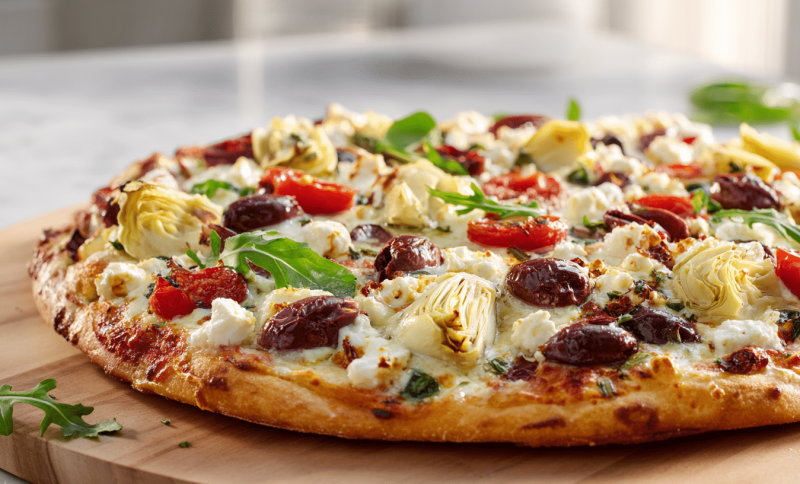Mediterranean pizza combines the best flavors of the Greek islands and Italian coastlines on one delicious crust.
This style features fresh vegetables, tangy cheeses, and aromatic herbs that create a lighter, more refreshing alternative to heavy meat pizzas.
The combination of feta and mozzarella with vibrant vegetables makes every bite satisfying without feeling overwhelming.
New to homemade pizza or looking to expand your repertoire, these techniques will help you create restaurant-quality results at home.
What Is Mediterranean Pizza
Mediterranean pizza draws inspiration from Greek and Italian coastal cuisines, featuring ingredients like feta cheese, olives, fresh tomatoes, and aromatic herbs.
Unlike traditional pizza loaded with pepperoni or sausage, this style celebrates fresh vegetables and lighter cheeses that let each ingredient shine through.
The flavor profile balances tangy feta with creamy mozzarella, while vegetables like cherry tomatoes and Kalamata olives add bursts of sweetness and brininess.
Fresh herbs and quality olive oil tie everything together with Mediterranean warmth.
Ingredients
|
Recipe Notes
| Prep Time | 20 minutes |
| Cook Time | 10-15 minutes |
| Total Time | 35 minutes |
| Serves | 4 people |
| Difficulty | Easy |
| Diet | Vegetarian |
Step-by-Step Mediterranean Pizza
This Mediterranean pizza brings together the fresh, vibrant flavors of the Mediterranean coast. With creamy feta, fresh vegetables, and aromatic herbs, it’s a delicious way to enjoy a healthier pizza night.
Step 1: Preheat Your Oven
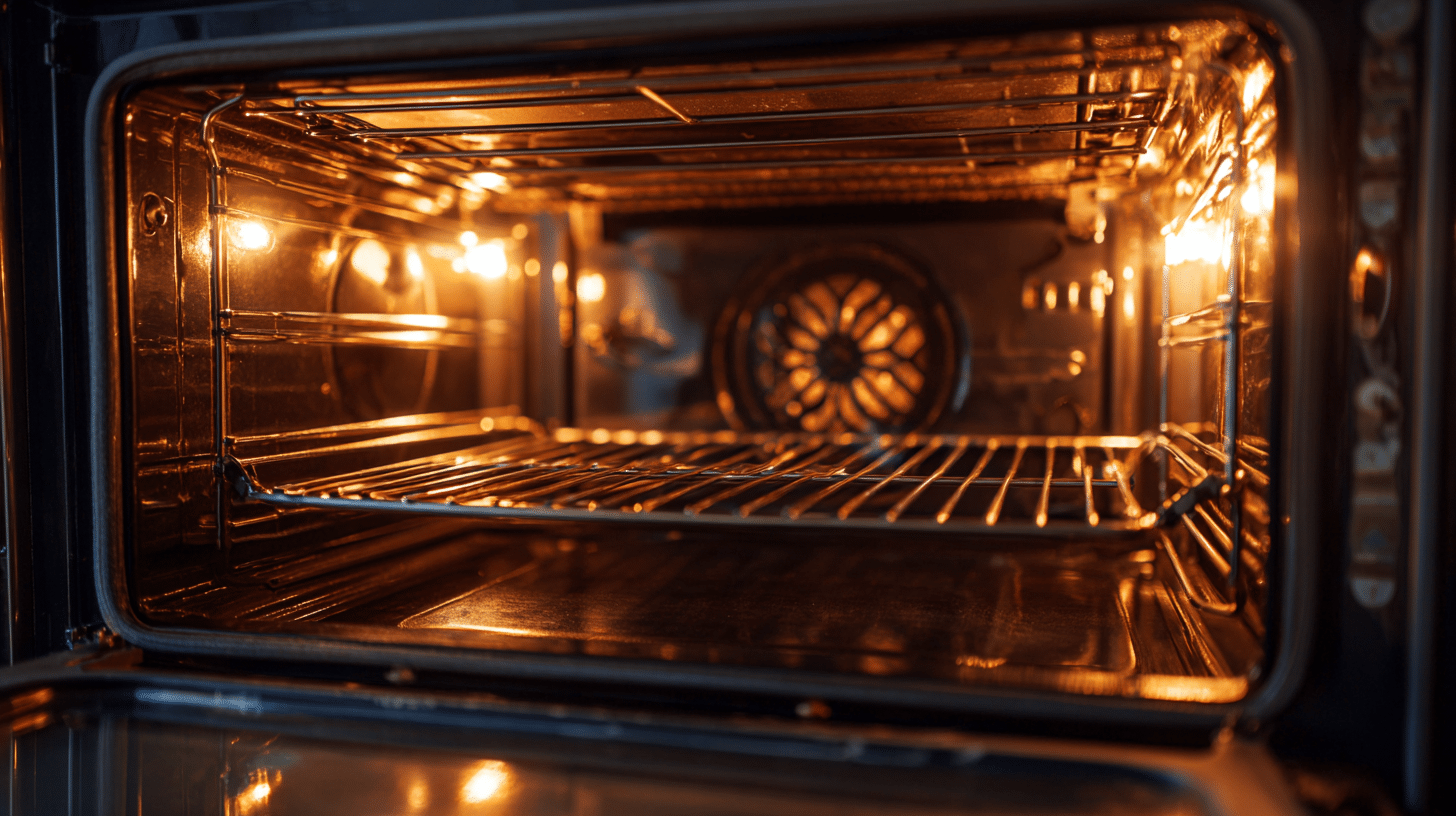
Preheat oven to 475°F (245°C). If using a pizza stone, heat it in the oven while you prepare your ingredients. The high heat will give you a crispy, restaurant-quality crust.
Pro Tip: Place your pizza stone on the bottom rack and preheat for at least 30 minutes for the best crispy crust results.
Step 2: Prepare the Dough
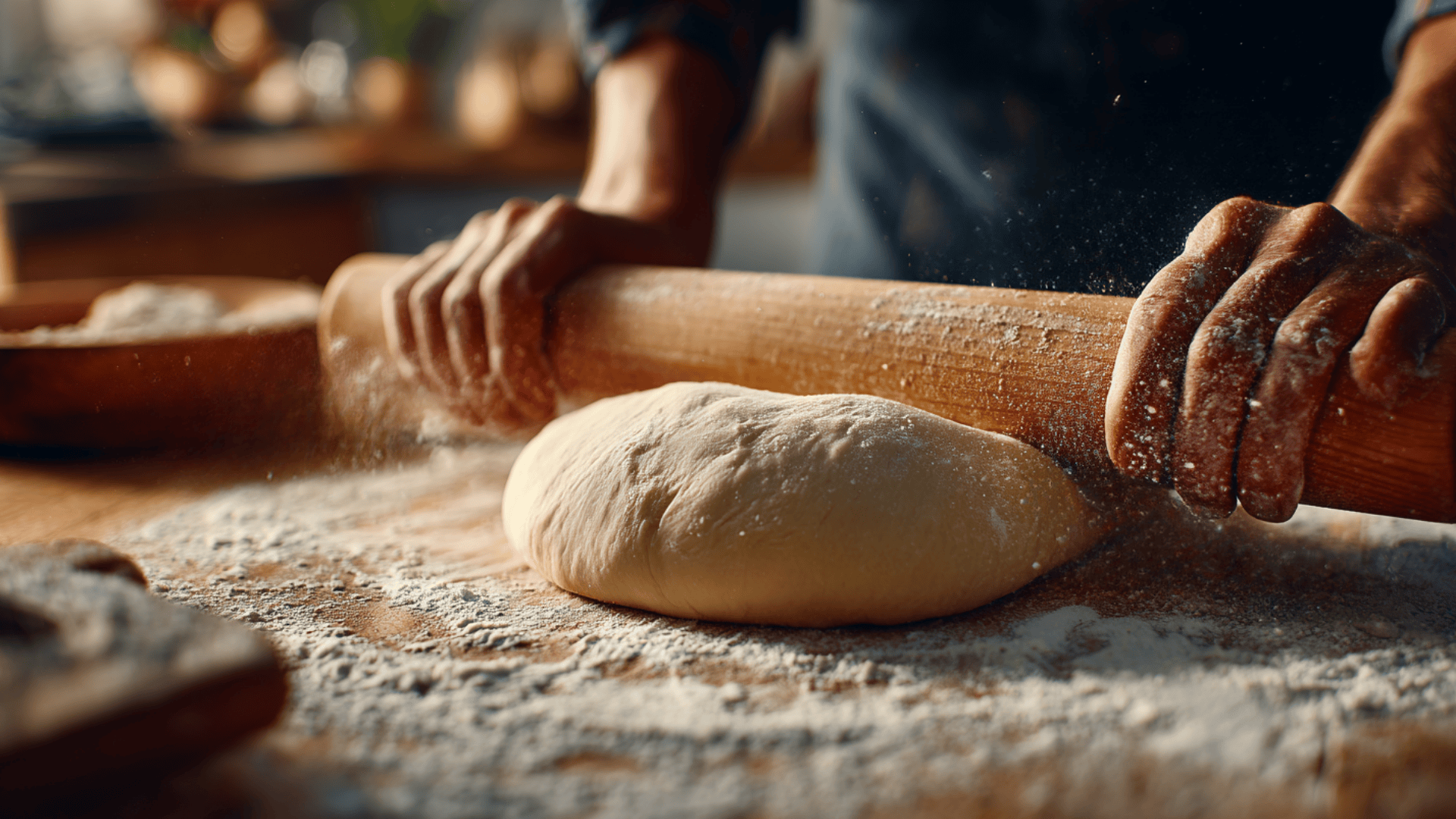
Roll out the dough on a lightly floured surface to the desired thickness. Transfer to pizza peel or parchment-lined baking sheet. Make sure your surface is well-floured to prevent sticking.
Pro Tip: Let the dough come to room temperature for 30 minutes before rolling – it will stretch much easier without springing back.
Step 3: Add the Base
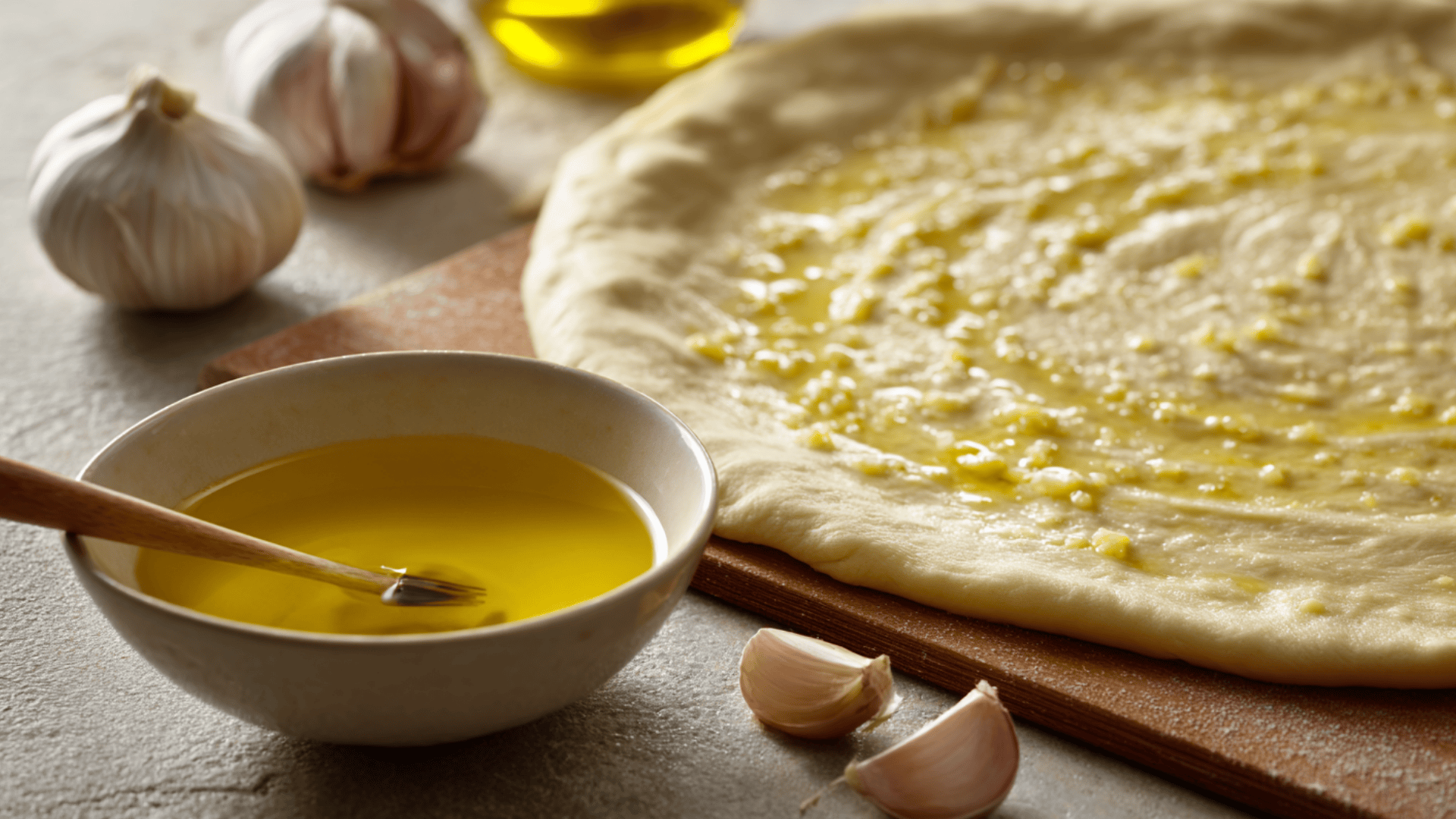
Brush olive oil and minced garlic onto the dough base evenly. This creates a flavorful foundation and helps prevent the crust from getting soggy. Don’t skip this step as it adds essential Mediterranean flavor.
Pro Tip: Mix the minced garlic with the olive oil and let it sit for 10 minutes before brushing – this mellows the garlic flavor and prevents burning.
Step 4: Layer the Toppings
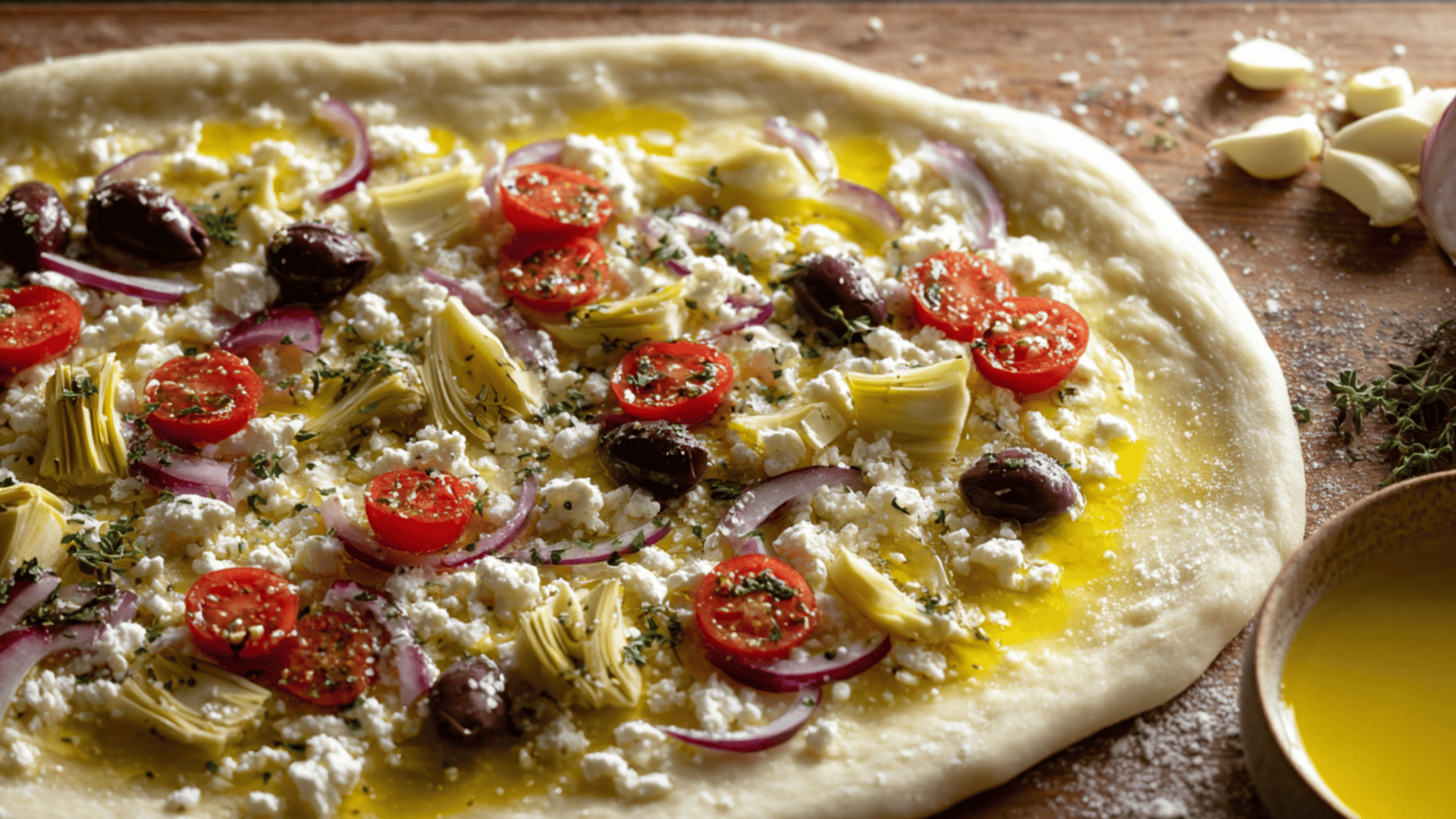
Add mozzarella cheese first, creating an even layer across the surface. Then layer your toppings: tomatoes, olives, red onion, and artichokes for an authentic Mediterranean taste. Finish by sprinkling crumbled feta cheese and seasoning with oregano, salt, and pepper.
Pro Tip: Pat cherry tomatoes dry with paper towels before adding them to prevent excess moisture from making your crust soggy.
Step 5: Bake the Pizza
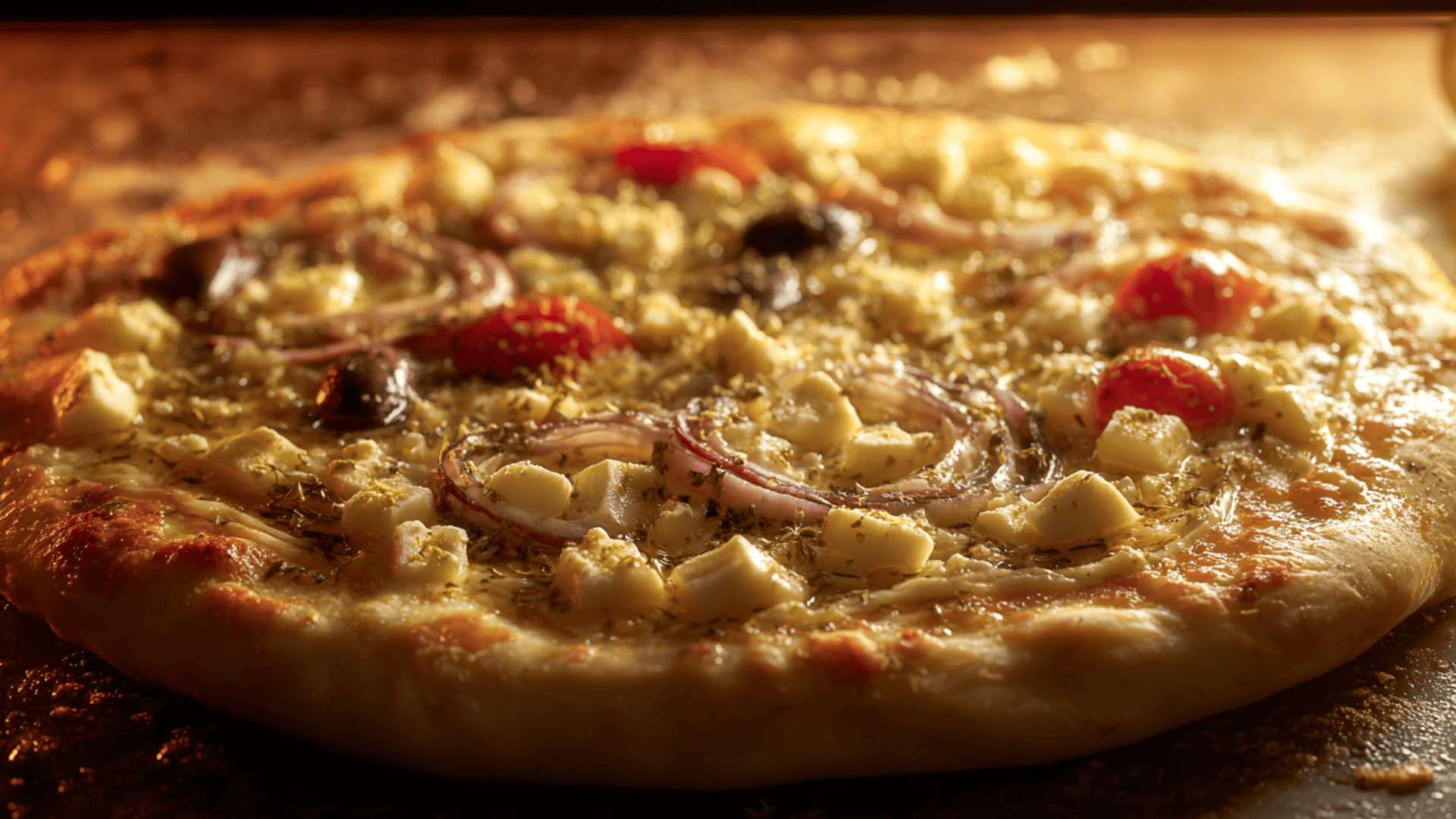
Slide the pizza into the preheated oven and bake for 10-15 minutes. Watch for a golden-brown crust and bubbly, lightly browned cheese. The edges should be crispy, and the center should be set but not overcooked.
Pro Tip: Rotate your pizza halfway through baking to ensure even browning, especially if your oven has hot spots.
Step 6: Final Touches and Serve
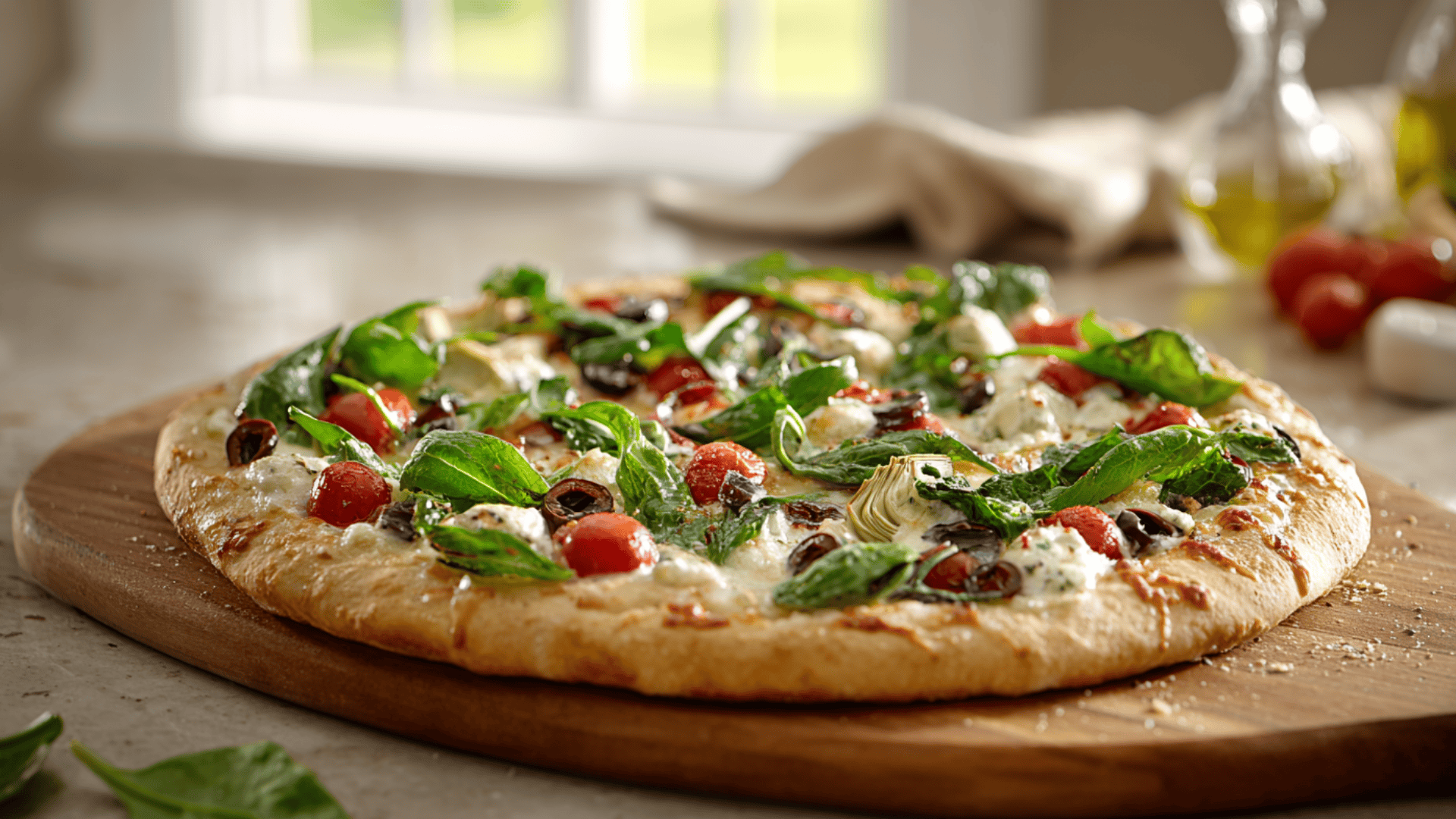
Remove the pizza from the oven and immediately top with fresh spinach or arugula and torn fresh basil leaves.
Let the pizza rest for 2 minutes to allow the cheese to set slightly before slicing. Cut into wedges and serve hot while the cheese is still melty.
Pro Tip: Use a pizza wheel or sharp chef’s knife for clean cuts – a dull knife will drag the toppings and make a mess.
Nutrition Overview of Mediterranean Pizza
| Nutrition (Per Serving) | Amount |
|---|---|
| Calories | 385Kcal |
| Protein | 16g |
| Carbohydrates | 45g |
| Fat | 16g |
| Fiber | 3g |
| Sugar | 4g |
| Sodium | 720mg |
| Calcium | 280mg |
Note: Nutritional values are approximate and may vary based on specific ingredients, brands, and portion sizes used. These calculations are for informational purposes only and should not replace professional dietary advice.
Three Preparation Methods
Each method creates a different texture and eating experience, so choose based on your preferences and available equipment.
Method 1: Thin & Crispy Crust

Roll dough thinner (⅛ inch), reduce baking time to about 10 minutes, and bake on a pizza stone or preheated baking steel for extra crispness. This method works perfectly if you prefer crunch over chew and want a lighter feel.
The thin crust allows the toppings to shine without heavy bread dominating each bite. Preheat your pizza stone for at least 30 minutes before baking for the best results.
Method 2: Sheet Pan/Rectangular

Use a sheet pan and stretch the dough to fill a rectangle rather than forming a circle. Bake until edges become crispy and golden. This approach works great for feeding more people with less shaping effort.
The rectangular format makes slicing and serving easier for parties or family dinners. You get more edge pieces, which many people prefer for the extra crispiness.
Method 3: Cheese Light Version
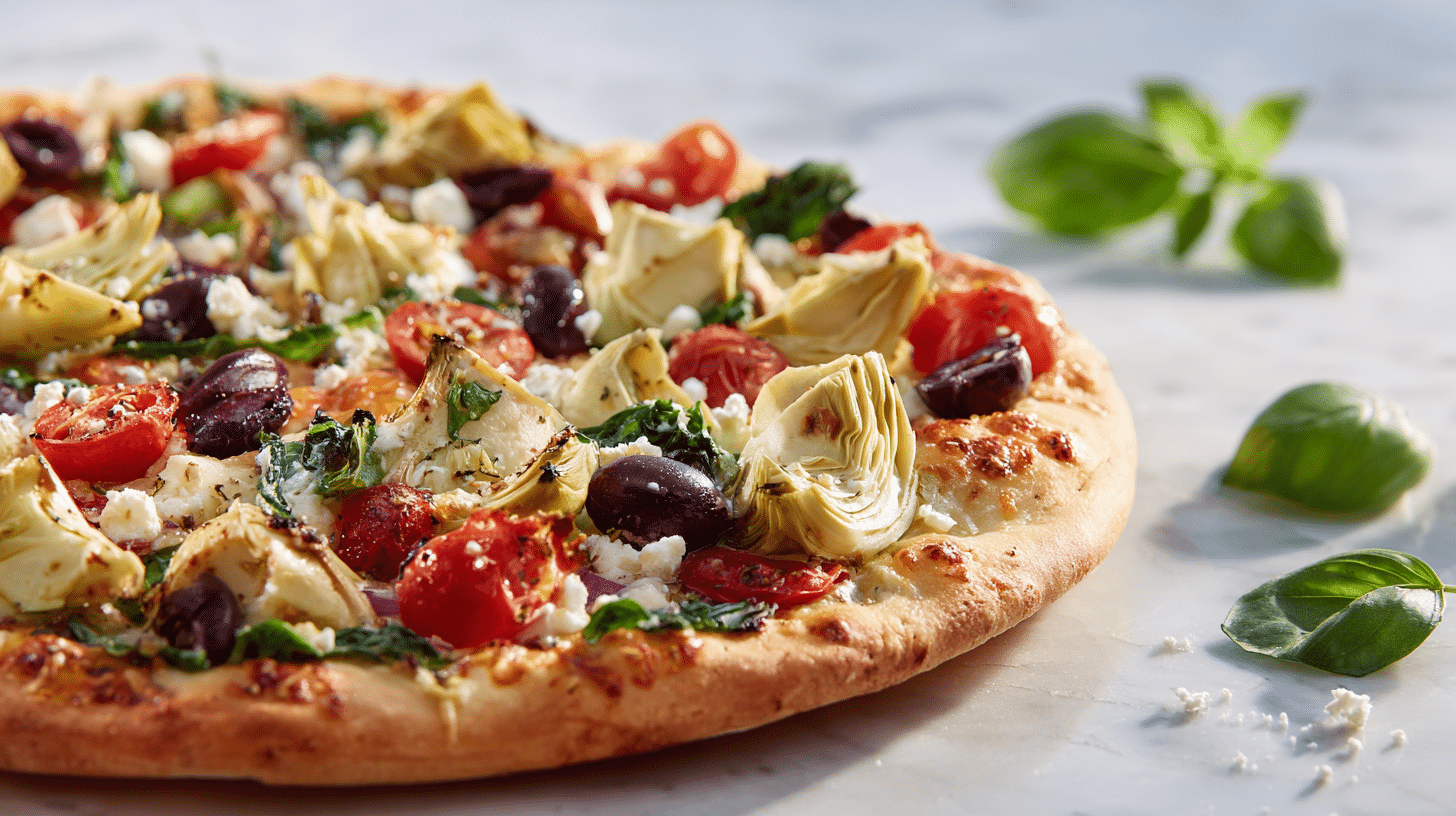
Use only feta cheese (skip mozzarella) or reduce total cheese amounts while adding more vegetables like extra artichokes, spinach, and tomatoes. Brush the crust heavily with olive oil and garlic to boost flavor without additional cheese.
This version reduces calories and saturated fat while maintaining satisfying Mediterranean flavors. The olive oil prevents the crust from seeming dry despite less cheese.
Creative Variations and Toppings
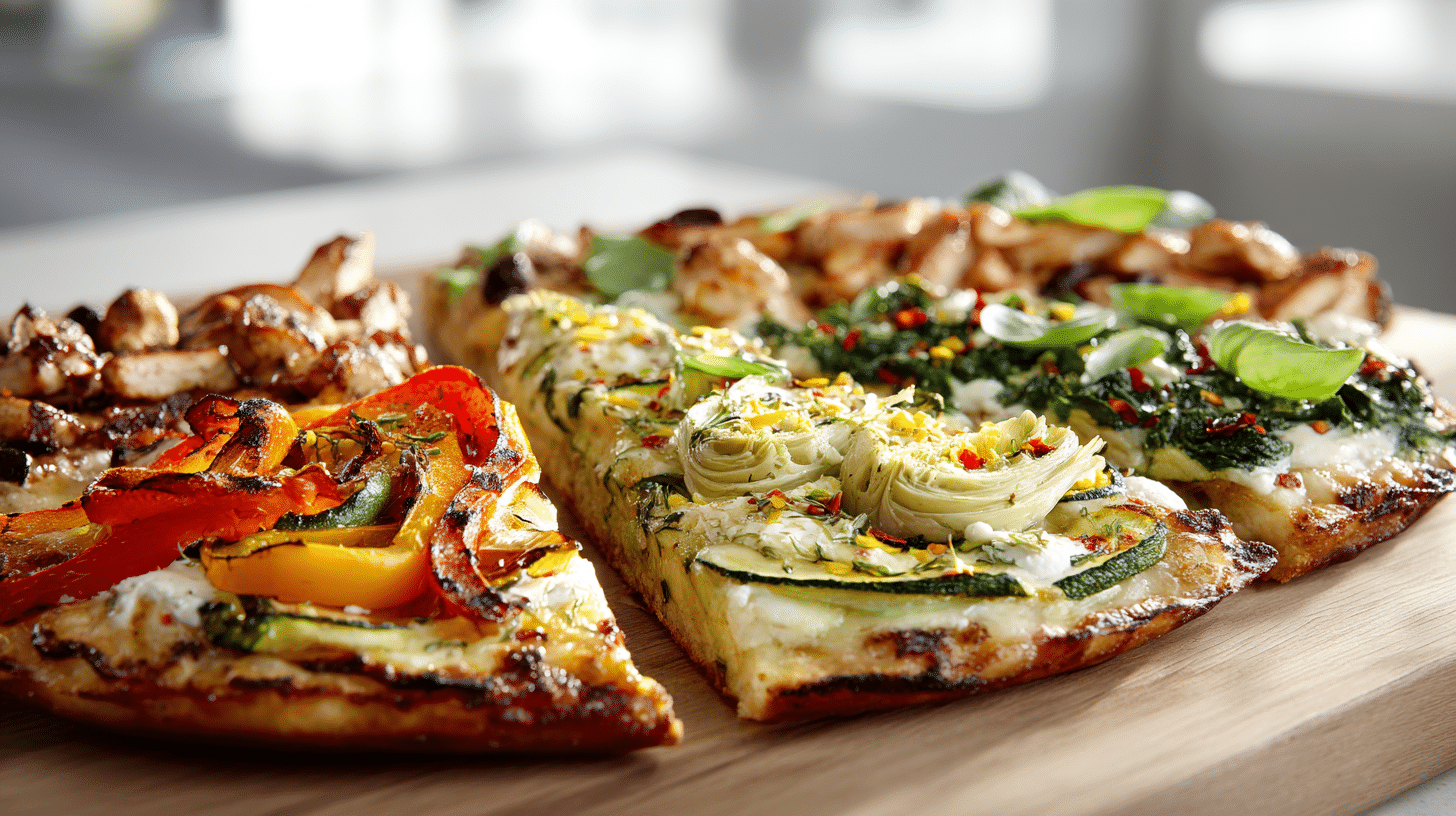
The beauty of Mediterranean pizza lies in how easily you can customize it with different vegetables and seasonings.
Here are winning combinations that maintain the Mediterranean theme while adding variety.
1. Vegetable Swaps
Replace red onion with thinly sliced shallots for a milder, sweeter flavor. Add roasted bell peppers or zucchini for extra color and nutrients. Use sun-dried tomatoes instead of fresh cherry tomatoes for a more concentrated, tangy flavor.
2. Protein Options
Add grilled chicken for a heartier meal. Include anchovies for authentic Mediterranean saltiness. Try cannellini beans for plant-based protein and fiber.
3. Herb and Seasoning Variations
After baking, toss on fresh basil plus a squeeze of lemon juice to brighten all the flavors. Try fresh oregano, thyme, or rosemary for different aromatic profiles. A sprinkle of red pepper flakes adds gentle heat.
4. Vegan Version
Use plant-based mozzarella and feta alternatives, skipping dairy cheese entirely. Increase vegetables and brush crust generously with herb-infused olive oil to maintain richness and flavor satisfaction.
Serving Suggestions and Pairings
Mediterranean pizza works beautifully as both a main dish and an appetizer, depending on portion sizes and accompaniments.
Serve with a simple arugula salad dressed in lemon vinaigrette to complement the pizza’s flavors while adding fresh greens.
For entertaining, cut into smaller squares and serve as appetizers alongside other Mediterranean dishes like hummus, olives, and stuffed grape leaves.
The combination creates an impressive spread with minimal effort.
Pair with light white wines like Sauvignon Blanc or Pinot Grigio, which complement the feta and herbs without overwhelming the delicate vegetable flavors.
Storage and Reheating
Keep your Mediterranean pizza fresh and delicious with these easy storage and reheating tips:
- Refrigerate up to 3 days in an airtight container.
- Layer with paper towels if stacking slices to absorb extra moisture from veggies.
- Skillet method (best for crispness): reheat over medium heat 2–3 minutes, then cover briefly to warm toppings.
- Oven method (best for multiple slices): bake at 350°F for 5–7 minutes until heated through.
Pro Tip: Avoid the microwave; it makes the crust soggy. A hot skillet or oven will keep that golden crunch intact.
Why This Combination Works So Well
Mediterranean pizza succeeds because it balances complementary flavors and textures perfectly.
The salty feta contrasts with sweet cherry tomatoes, while creamy mozzarella mellows the tangy elements. Fresh herbs brighten everything and tie the flavors together.
The vegetable-forward approach feels lighter than traditional pizza while still providing satisfaction through varied textures and complex tastes. Each ingredient serves a purpose without overwhelming the others.
This isn’t just pizza with random vegetables thrown on top – it’s a thoughtful combination that transports you to Mediterranean coastlines with every bite.
Start with the basic version and experiment with variations to find your perfect combination of flavors and textures.








